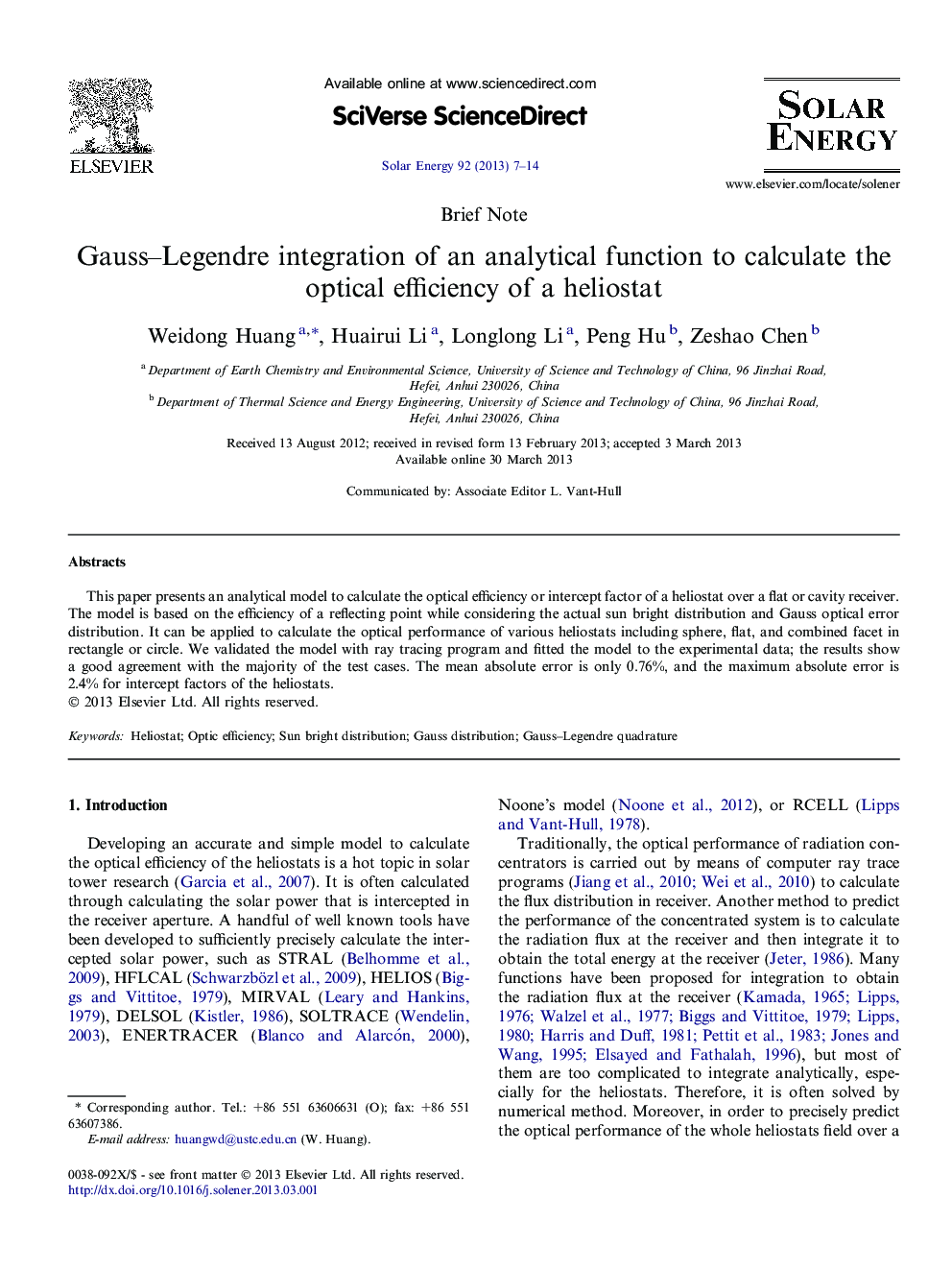| Article ID | Journal | Published Year | Pages | File Type |
|---|---|---|---|---|
| 1550562 | Solar Energy | 2013 | 8 Pages |
•Analytical method to calculate the optical efficiency of the heliostats.•Validate with ray tracing technology and fit with experimental data.•Quick algorithm with Gauss integration.•Flexible and precise with real solar distribution and incidence angle effects.
sThis paper presents an analytical model to calculate the optical efficiency or intercept factor of a heliostat over a flat or cavity receiver. The model is based on the efficiency of a reflecting point while considering the actual sun bright distribution and Gauss optical error distribution. It can be applied to calculate the optical performance of various heliostats including sphere, flat, and combined facet in rectangle or circle. We validated the model with ray tracing program and fitted the model to the experimental data; the results show a good agreement with the majority of the test cases. The mean absolute error is only 0.76%, and the maximum absolute error is 2.4% for intercept factors of the heliostats.
